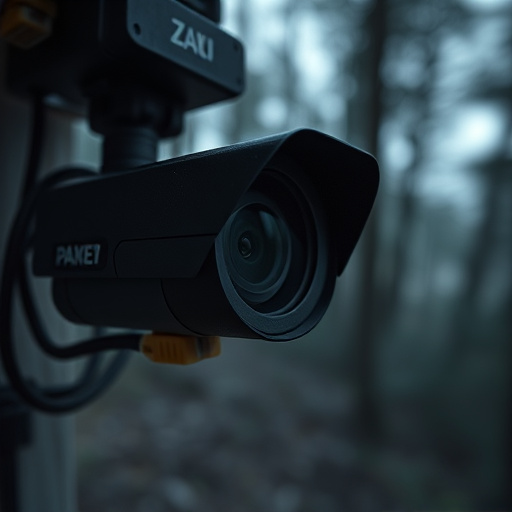Wireless hidden cameras transform apartment security by offering discreet 24/7 surveillance while preserving tenant privacy. Disguised as everyday items, they provide remote monitoring power to landlords, deterring intruders and aiding evidence collection. Strategically placed in common areas, these cameras enhance safety without complex wiring. However, their deployment raises ethical and legal concerns regarding tenant privacy rights, emphasizing the need for informed consent and strict adherence to local regulations. Tenants can protect their privacy by inspecting properties for unusual devices and employing anti-surveillance measures.
Uncovering secret surveillance spots in rental properties has become a growing concern for tenants. This article delves into the world of Wireless Hidden Cameras for Apartments, exploring their role as discreet monitoring solutions. We uncover common installation spots, highlight ethical considerations and legal implications, and equip tenants with essential tips to detect and prevent hidden cameras. Stay informed and protect your privacy in today’s digital era.
- Understanding Wireless Hidden Cameras: A Discreet Monitoring Solution for Rentals
- Common Installation Spots: Maximizing Coverage in Apartments
- Ethical Considerations and Legal Implications of Secret Surveillance
- Detecting and Preventing Hidden Cameras: Tips for Tenant Awareness
Understanding Wireless Hidden Cameras: A Discreet Monitoring Solution for Rentals
Wireless hidden cameras have emerged as a discreet monitoring solution for rental properties, offering landlords and property managers a way to maintain security without compromising tenant privacy. These innovative devices are designed to blend seamlessly into their surroundings, often disguised as everyday objects like smoke detectors or light switches. This makes them an ideal choice for apartments, as they can capture footage of common areas and interior spaces without raising suspicion among tenants.
The benefits of using wireless hidden cameras in apartments are numerous. They provide 24/7 surveillance, allowing landlords to remotely monitor activity, deter potential intruders, and gather evidence in case of any unauthorized access or property damage. Moreover, these cameras can be easily installed and set up, requiring no complex wiring or professional setup, making them a convenient and cost-effective solution for rental properties.
Common Installation Spots: Maximizing Coverage in Apartments
In apartments, wireless hidden cameras are strategically installed in common areas to maximize coverage. These spots often include entry doors and hallways, where they can capture uninvited visitors or potential security breaches. By placing these devices discreetly, residents and property managers ensure round-the-clock surveillance without compromising privacy.
Additional common installation points are near mail rooms, laundry facilities, and common living spaces. This comprehensive approach allows for a thorough assessment of any unusual activities, enhancing overall safety and peace of mind. Wireless hidden cameras for apartments provide an effective solution for maintaining order in shared living environments.
Ethical Considerations and Legal Implications of Secret Surveillance
The use of wireless hidden cameras in rental properties raises significant ethical considerations and legal implications. While landlords may argue that these devices serve as tools for maintaining property security and tenant accountability, the invasion of privacy they facilitate is a growing concern among tenants’ rights advocates. Installing such cameras without explicit consent can lead to mistrust and strain landlord-tenant relationships.
Legally, the placement of hidden cameras in apartments is governed by varying state and local laws. Many jurisdictions have strict regulations regarding the use of surveillance technology, with rules dictating where cameras can be installed, who has access to footage, and how long recordings can be stored. Landlords must ensure they comply with these laws to avoid legal repercussions. Tenants, for their part, need to be fully informed about any surveillance systems in place, protecting their right to privacy and ensuring informed consent.
Detecting and Preventing Hidden Cameras: Tips for Tenant Awareness
Detecting hidden cameras, especially wireless hidden cameras for apartments, is a crucial aspect of tenant awareness in today’s digital age. Tenants should be vigilant and proactive when it comes to securing their privacy. Regularly inspect your rental property for any unusual devices or equipment that could facilitate secret surveillance. Look for small, compact objects or devices attached to walls, ceilings, or furniture, as they might be hidden cameras. Check common areas like bathrooms, kitchens, and bedrooms, where these devices are most likely to be placed.
To prevent unauthorized surveillance, consider implementing some simple yet effective measures. Keep an eye out for any unfamiliar electrical outlets or wires that could indicate the presence of hidden recording equipment. Install privacy films or coverings on windows to block visual access from outside. Regularly update your security system and use reliable anti-surveillance tools designed to detect and disrupt wireless hidden cameras for apartments. By staying alert and taking these precautions, tenants can ensure a safer and more private living environment.
While wireless hidden cameras can offer landlords enhanced security and property monitoring, it’s crucial to balance this with ethical considerations and legal implications. Tenants have a right to privacy, and any surveillance must adhere to local laws and regulations. By understanding common installation spots and being aware of potential risks, tenants can take proactive steps to protect their personal spaces. Staying informed about these issues ensures a harmonious relationship between landlords and tenants in the age of advanced technology.
